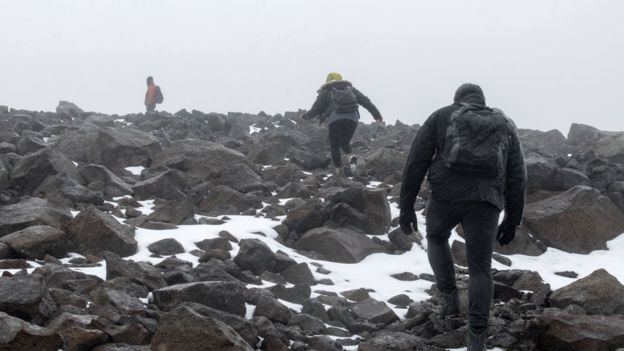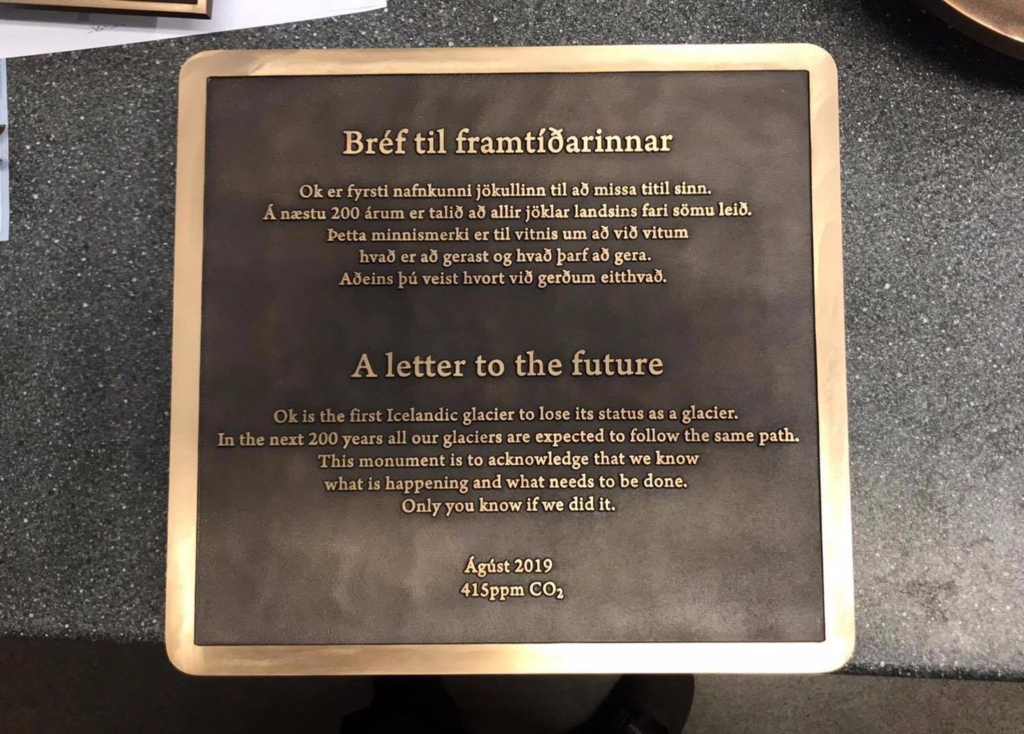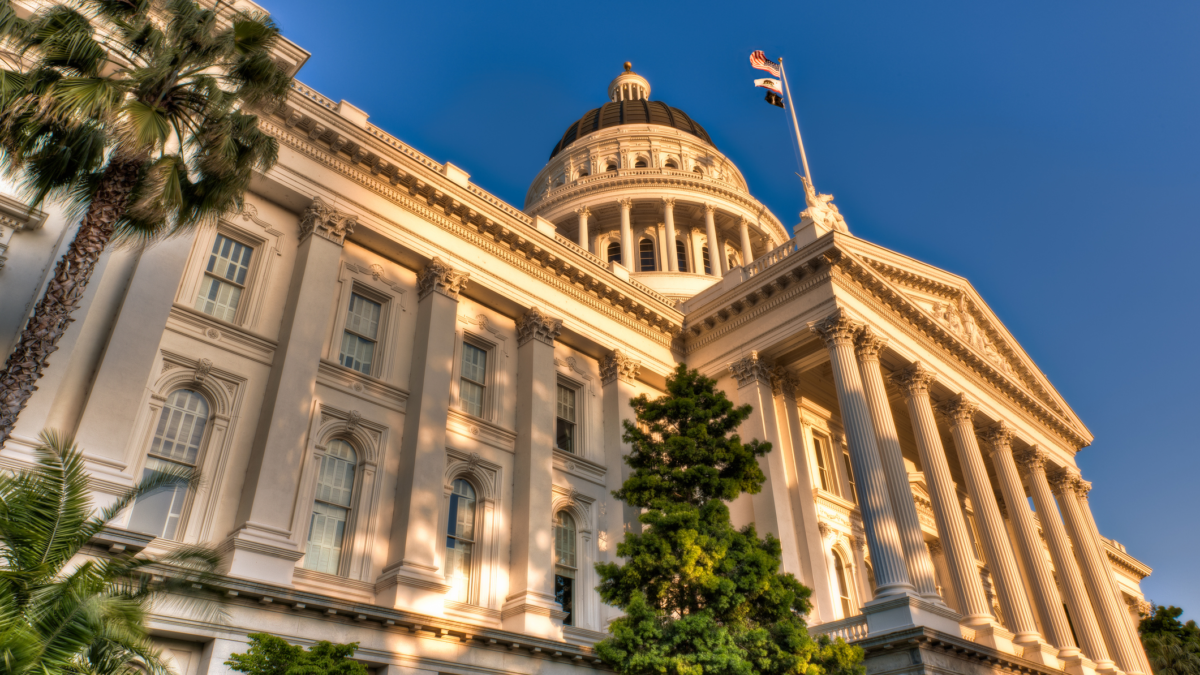Iceland commemorates first glacier lost to global warming – “The world that we learned how it was, learned by heart as some kind of eternal fact, is not a fact any more”

By Toby Luckhurst
18 August 2019
(BBC News) – Mourners have gathered in Iceland to commemorate the loss of Okjokull, which has died at the age of about 700.
The glacier was officially declared dead in 2014 when it was no longer thick enough to move.
What once was glacier has been reduced to a small patch of ice atop a volcano.
Prime Minister Katrin Jakobsdottir, Environment Minister Gudmundur Ingi Gudbrandsson and former Irish President Mary Robinson were due to attend the ceremony.
After opening remarks by Ms Jakobsdottir, mourners were set to walk up the volcano northeast of the capital Reykjavik to lay a plaque which carries a letter to the future.

“Ok is the first Icelandic glacier to lose its status as glacier,” it reads.
“In the next 200 years all our main glaciers are expected to follow the same path. This monument is to acknowledge that we know what is happening and what needs to be done.
“Only you know if we did it.”
The dedication, written by Icelandic author Andri Snaer Magnason, ends with the date of the ceremony and the concentration of carbon dioxide in the air globally – 415 parts per million (ppm).
“You think in a different time scale when you’re writing in copper rather than in paper,” Mr Magnason told the BBC. “You start to think that someone actually is coming there in 300 years reading it.

“This is a big symbolic moment,” he said. “Climate change doesn’t have a beginning or end and I think the philosophy behind this plaque is to place this warning sign to remind ourselves that historical events are happening, and we should not normalise them. We should put our feet down and say, okay, this is gone, this is significant.” […]
“My generation had to learn by heart the names of the most significant mountains, moors, fjords,” Mr Magnason explained. “So culturally it’s also referring back to childhood textbooks.
“The world that we learned how it was, learned by heart as some kind of eternal fact, is not a fact any more.” [more]

